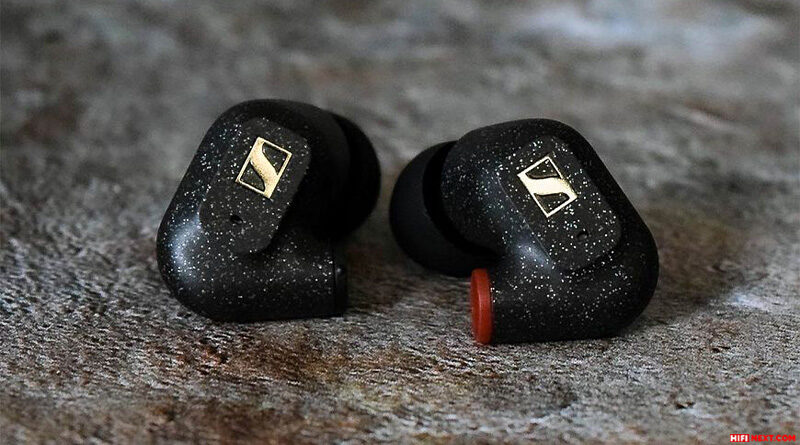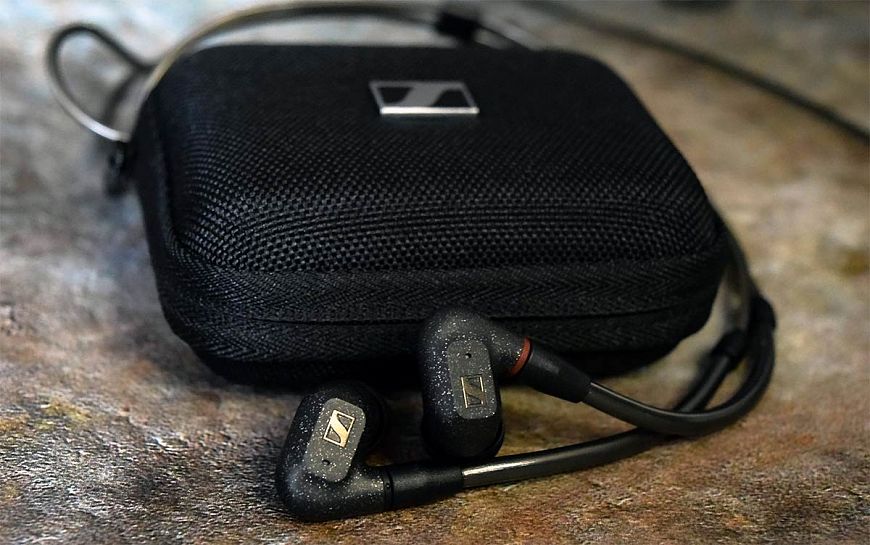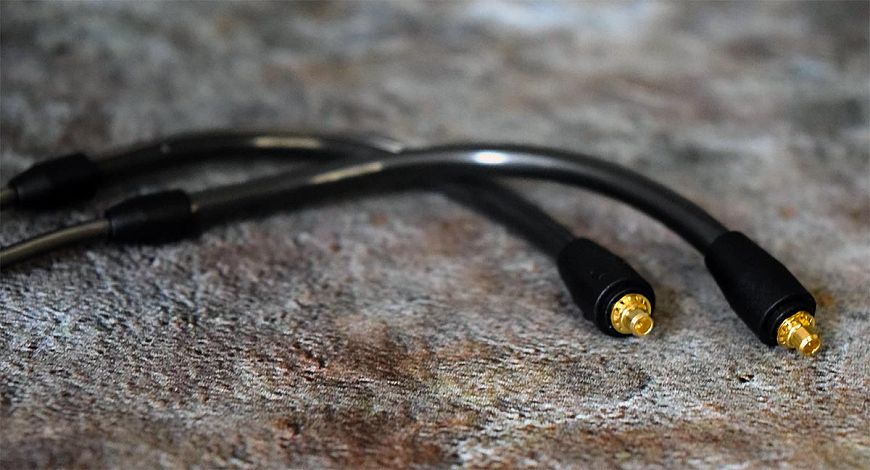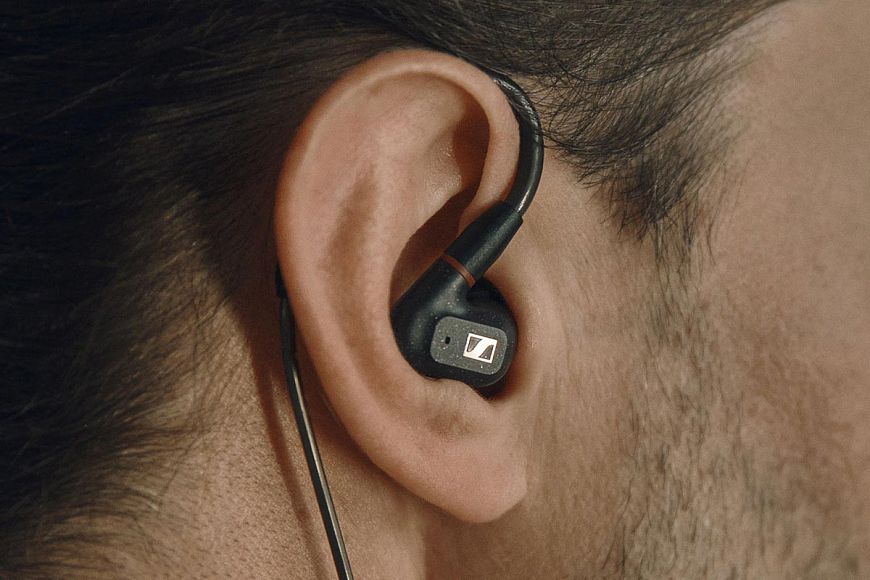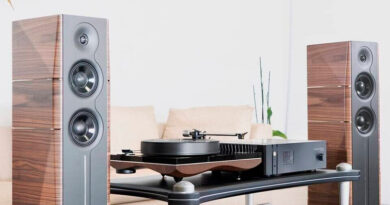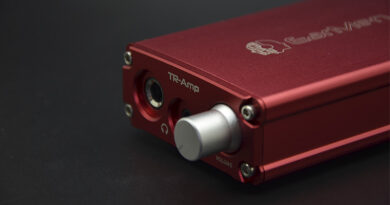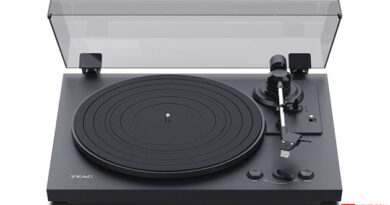Sennheiser IE 300 Review
The Sennheiser IE 300, which has recently appeared on the market, opens a new series of in-ear headphones from the German company. The good news is that the new product uses the same drivers as the flagship Sennheiser IE 800 S.
Contents:
Packaging
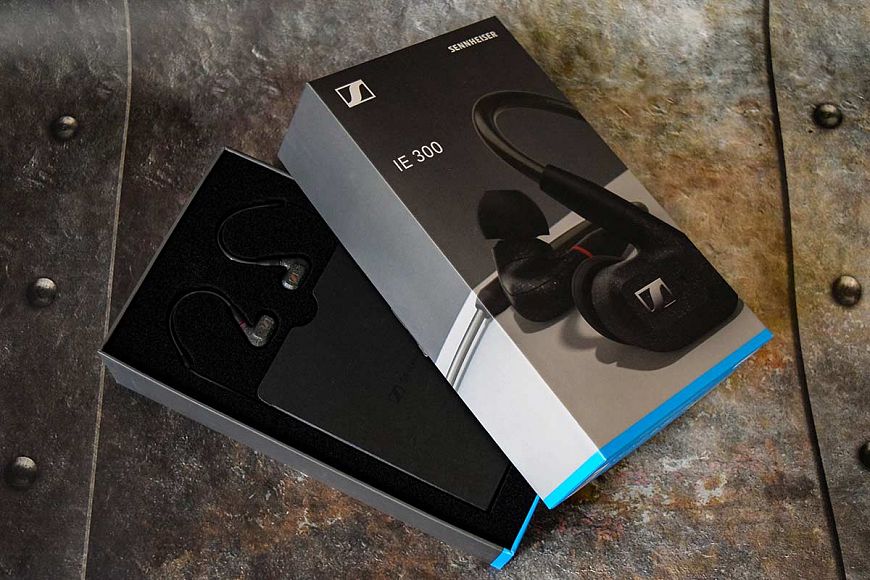
The package includes a removable cable, which is equipped with gold-plated MMCX connectors, and the insulation of which is additionally reinforced with para-aramid fiber threads. The standard set includes a wire with a 3.5mm plug, but you can also purchase optional versions of balanced cables with 4.4 mm or 2.5 mm connectors. The Sennheiser IE 300 comes with memory foam and silicone ear pads in three different sizes – small, medium and large.
The cable ends are equipped with adjustable flexible earhooks, which are designed to provide a secure fit and comfort even during long listening sessions. And the non-contact cable routing inside the earhooks allows you to minimize contact noise that occurs when rubbing against the auricle or the frame of the glasses.
Features
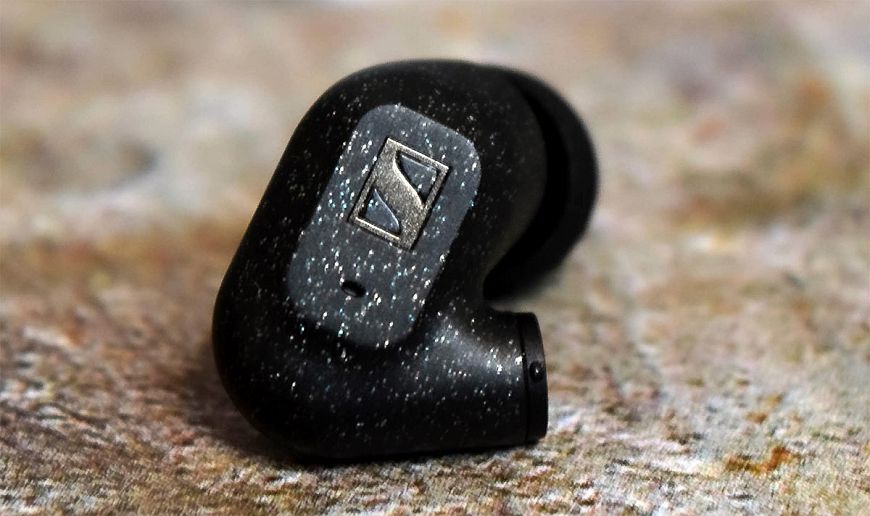
Although, there are still differences in the emitters with the IE 800 S model. For use in the Sennheiser IE 300, the proprietary 7-mm XWB (Xtra Wide Band) driver has been further improved, in particular, a new diaphragm has been developed for it, optimized to reduce distortion. The material of which it is made significantly reduces the response time, which ensures greater fidelity across the entire frequency range. As before, this driver is entirely manufactured in the Sennheiser plant in Germany.
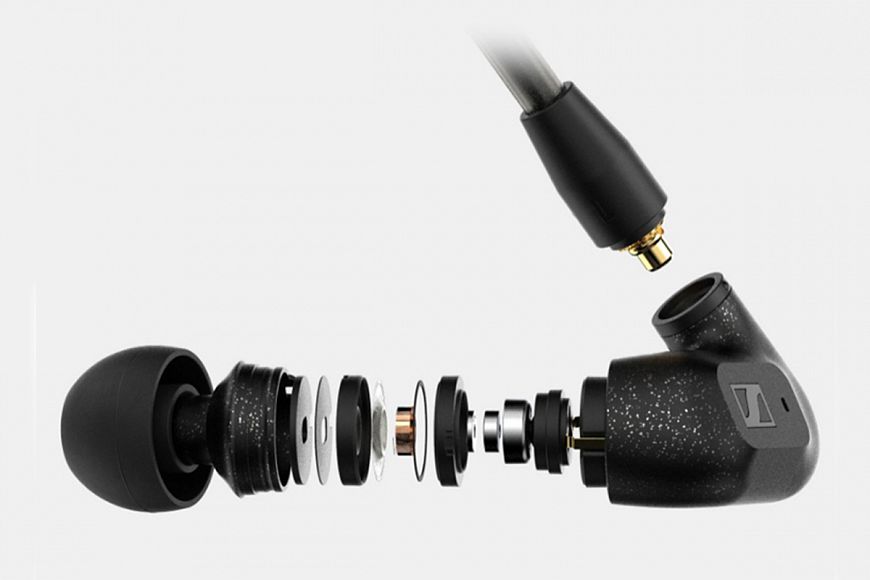
The main feature of the design is a precisely calculated acoustic compression chamber, which helps to control the air flow behind the speaker. It controls the direction and total volume of air passing through the radiator system. In addition, the design of the headphones uses single-chamber Helmholtz resonators to reduce unwanted resonances in the auditory canal and reduce the effect of masking some frequencies with others. The headphone case itself is made of composite plastic, the surface of which imitates the structure of granite and under certain lighting conditions seems to be permeated with golden veins. A very beautiful solution!
Sound
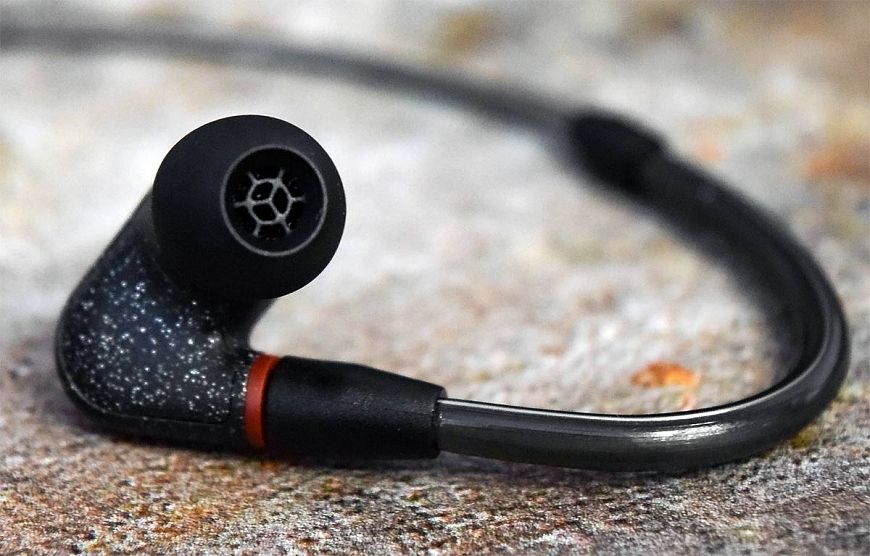
Listening to the headphones was paired with a Samsung Galaxy Note 9 smartphone, which has a good DAC and output stage, as well as a portable Hi-Res player Astell & Kern A & Futura SE100.
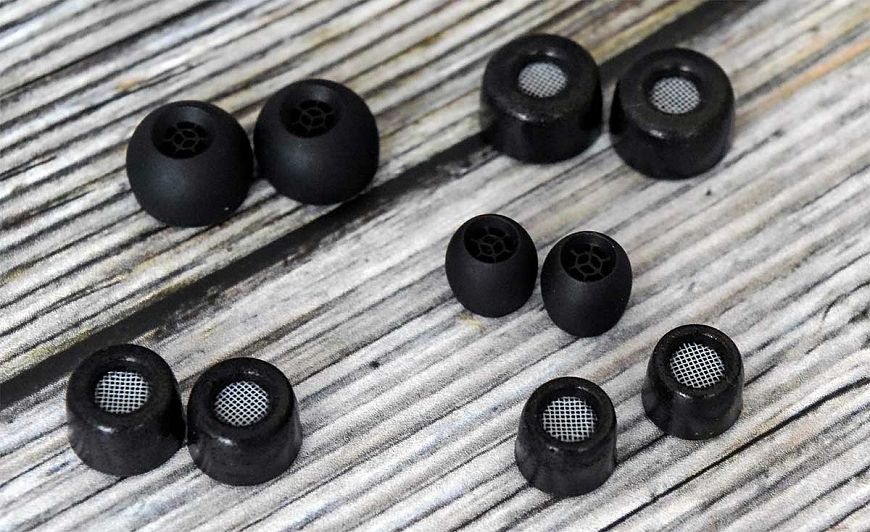
A few words about ear pads. Since the air ducts of the Sennheiser IE 300 are not the longest by the standards of in-ear headphones, the issue of high-quality passive isolation will be decisive in evaluating the sound. In my case, the best fit, and therefore sound, was achieved with medium-sized foam ear pads. I note that although the earhooks help the headphones to stay in the sink to ensure a secure fit, people who wear corrective glasses or sunglasses should remember that it is quite difficult to achieve a perfect fit, the temples still interfere.
So, about the sound. We will say right away – for those music lovers who in recent years have become accustomed to using exclusively wireless Bluetooth headphones, the sound of the new Sennheiser IE 300 can be a real revelation. However, like the sound of any high-quality wired in-ear headphones. Of course, experienced audiophiles do not need to explain the advantages of a wired connection, but lately I often have to deal with “advanced” young people who simply do not know how much the signal degrades when it is transmitted in compressed form via Bluetooth. So sometimes you have to carry out explanatory work.
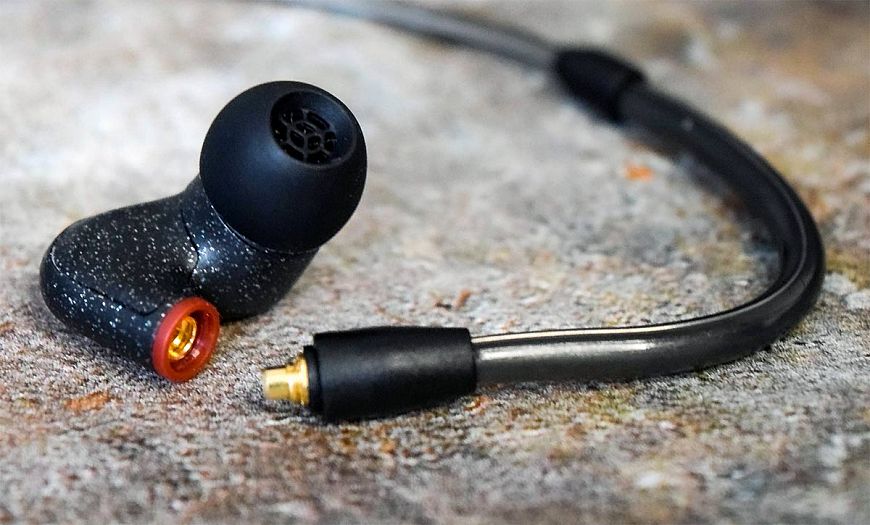
Contrary to various opinions, it is worth noting that there is still serious sound in traditional dynamic in-ear headphones, you just need to know how to set them up. And Sennheiser’s engineers can do it better than anyone else.
With the right fit and selection of ear pads, the Sennheiser IE 300 produces a large and sprawling sound with excellent resolution across the entire range and wonderful bass. Very often, when testing a variety of audio equipment, we have to catch ourselves thinking that we like everything, but it would only be good to add a little pressure (resolution, speed) in one part of the range or reduce it a little in the other. Here, everything at once plays so correctly that the ear simply has nothing to catch on to.
Any genre is played almost perfectly, rock music fans will enjoy the magnificent barrel of Chris Slade on AC/DC “Big Gun” or the mind-blowing bass guitar of John Entwhistle on The Who’s “Real Me”. And fans of the classic repertoire will be surprised at how plausibly the headphones can reproduce fortissimo on Stravinsky’s “Firebird” – the speed and overload capacity of the model is excellent. And even at a very high volume, there is no underlining of sibilants, nor the notorious “porridge”, which is usually turned into complex polyphonic works by cheap headphones. Naturally, the better your signal source, the better the sound will give the Sennheiser IE 300, but even with a smartphone, they play just great. All in all, another great product from German engineers.
Conclusions
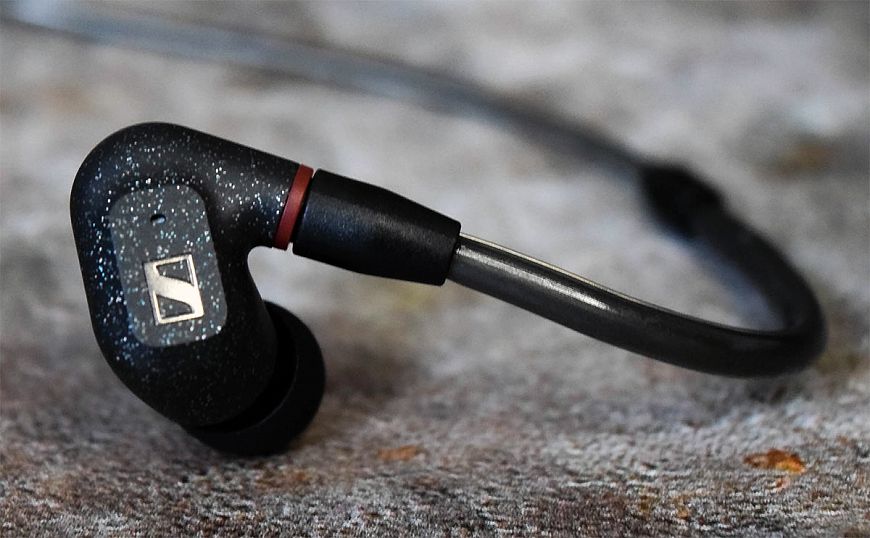
The case when excellent epithets are not a pity. The novelty convincingly demonstrates that good wired headphones are still the main weapon in the audiophile’s arsenal. And the Sennheiser IE 300 is its main caliber.
Specifications
- Impedance16 Ω
- Transducer principleSingle Dynamic Driver, Pressure Chamber
- Weight w/o cable4 g
- Sound pressure level (SPL)124 dB (1 kHz / 1 Vrms)
- Ear couplingIn-Ear
- Cable length125 cm
- Frequency response6 Hz – 20 kHz
- THD, total harmonic distortion< 0,08 % (1 kHz, 94 dB SPL)
Official site: sennheiser.com

